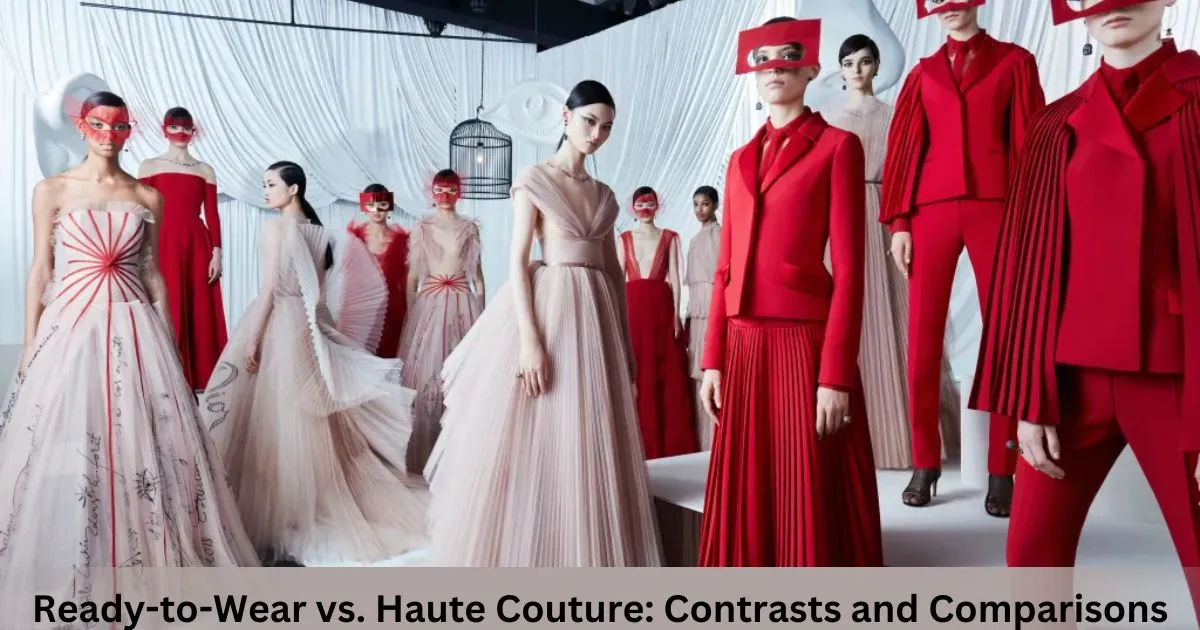Ready-to-put-on style emerged in the mid-20th century as a response to the developing call for extra on hand clothing options. It allows designers to exhibit their creativity even as they assemble the sensible needs of regular wearers. RTW clothes are normally produced in larger quantities using industrial sewing machines and techniques, making them more value-effective to fabricate and buy compared to custom-made or high fashion pieces.
Curious approximately how ready-to-put on style revolutionised the way we get dressed?
Ready-to-put-on style, or RTW, refers to garb manufactured in fashionable sizes and bought as finished clothes. It revolutionised style by making designer patterns available to the masses. Discover how RTW combines affordability with fashion, shaping global style tendencies and regular wardrobes alike.
Key Characteristics of Ready-to-put on style
Some keys of ready to wear fashion are here.
Standardised Sizing and Fit Ready-to-put on style adopts standardised sizing charts to ensure consistency in fit across brands and regions. This approach simplifies shopping for consumers by providing predictable measurements, enhancing convenience and confidence in purchasing online or in-store, regardless of geographic location or brand preference.
Accessibility and Affordability Ready-to-wear fashion democratises designer styles by offering affordable alternatives to bespoke clothing. It enables broader access to fashion trends and quality craftsmanship, catering to diverse consumer demographics. This accessibility fosters inclusivity in style choices, allowing individuals to express themselves through clothing without prohibitive costs.
Design Versatility and Adaptability
Ready-to-wear fashion excels in its ability to adapt to diverse tastes and trends swiftly. Designers create versatile collections that blend innovation with practicality, catering to dynamic consumer preferences. This adaptability ensures that RTW garments remain relevant and appealing in a fast-paced fashion landscape.
Production Processes and Efficiency
Ready-to-wear fashion optimises manufacturing with streamlined processes and technology. This guarantees timely transport of favour-ahead designs to the marketplace, assembling customer demand efficiently.Efficient manufacturing strategies additionally contribute to fee management, permitting manufacturers to provide aggressive pricing at the identical time as preserving fantastic necessities of their collections.
Ready-to-Wear vs. Haute Couture: Contrasts and Comparisons
Attention here to know about your queries.
Customization vs. Mass Production
Ready-to-wear fashion contrasts with haute couture’s bespoke approach by focusing on mass production. It prioritises standardised sizing and efficient manufacturing to cater to broader consumer bases. This trade-off between customization and scalability allows RTW to deliver trendy, accessible clothing while haute couture offers exclusive, personalised garments.
Price Points and Market Accessibility
Ready-to-put on style offers various rate factors to house one of a kind budgets, improving accessibility in comparison to high fashion. This pricing approach democratises fashion, making dressmaker-stimulated patterns manageable for a much wider target market. It bridges the space between luxury and affordability, attractive to numerous customer segments globally.
Artistic Expression vs. Commercial Viability
Ready-to-wear fashion balances artistic innovation with commercial success. Designers strive to create collections that merge innovative imaginative and prescient with marketplace demand, ensuring each aesthetic enchantment and profitability. This dual recognition permits RTW brands to preserve relevance inside the competitive fashion industry even as fostering creative integrity in their designs.
Impact on Fashion Innovation
Ready-to-put on style drives continuous innovation by responding quickly to patron traits and technological advancements. It encourages experimentation with new substances, techniques, and layout ideas, shaping the broader fashion landscape. This agility fosters creativity among designers and promotes forward-thinking approaches to garment production and styling.
The Impact and Influence of Ready-to-put style 
The impact of ready to wear fashion plays an important role on customers.
Global Fashion Trends and Movements of ready to put on style
Ready-to-wear style impacts global developments through disseminating patterns across borders. It serves as a cultural ambassador, showcasing various aesthetics and preferences worldwide. This move-cultural alternative fosters creativity and collaboration amongst designers, shaping cohesive style actions that resonate with a worldwide audience.
Cultural and Social Significance
Ready-to-put on style displays societal values and cultural norms, influencing how individuals express identification via garb It fosters inclusivity by celebrating diverse heritage and fashion traditions. This cultural dialogue promotes understanding and appreciation across communities, making fashion a powerful medium for social commentary and connection.
Economic Contributions to the Industry
Ready-to-wear fashion stimulates economic growth through job creation, manufacturing investments, and retail sales. It supports a vast network of suppliers, from fabric producers to retail outlets, driving revenue and employment opportunities globally. This monetary effect underscores RTW s function as a cornerstone of the fashion industry’s monetary ecosystem.
Consumer Preferences and Market Trends
Ready-to-wear fashion evolves with purchaser choices, adapting to changing tastes and life. Brands leverage marketplace insights to innovate designs and beautify client delight. This responsiveness to trends ensures that RTW remains relevant and competitive in a dynamic fashion market, catering to diverse consumer demands worldwide.
FAQ’S
What factors influence consumer preferences in fashion trends?
Consumer alternatives are stimulated by means of different factors together with cultural impacts, social media developments, celeb endorsements, seasonal changes, and personal fashion choices.
How do style manufacturers live updated with marketplace trends?
Fashion manufacturers stay updated by carrying out market research, analysing patron records, monitoring industry trends, and participating with trend forecasters.
Why are sustainability and moral practices turning into greater importance in purchaser picks?
Increasing consciousness of environmental issues and labour practices has brought on clients to prioritise brands that display sustainability and moral obligation.
How do style brands cater to numerous purchaser demographics?
Fashion brands cater to various demographics by providing inclusive sizing, numerous model illustration, and culturally applicable designs.
What role does technology play in shaping customer options and marketplace traits?
Technology affects fashion trends through e-commerce systems, digital try-on equipment, social media systems, and I-pushed customised pointers.
Conclusion
Consumer possibilities and market traits in ready to put on style industry geared up to put on fashion are dynamic forces that shape the complete environment of design, production, and retail. These tendencies is crucial for fashion manufacturers to remain applicable and competitive in a fast-paced worldwide market.Today, customer possibilities are stimulated with the aid of a myriad of things, starting from cultural influences and social media developments to sustainability worries and technological advancements.
Brands have to always adapt to those shifts via conducting thorough marketplace studies, analysing patron behaviour statistics, and leveraging insights to innovate their product services. This proactive method now not simplest facilitates in predicting future developments however additionally allows brands to reply swiftly to converting purchaser demands.Moreover, the upward push of virtual structures and e-trade has revolutionised how purchasers find out and purchase fashion objects.
You can also read this post:
What Is Maximalist Fashion

